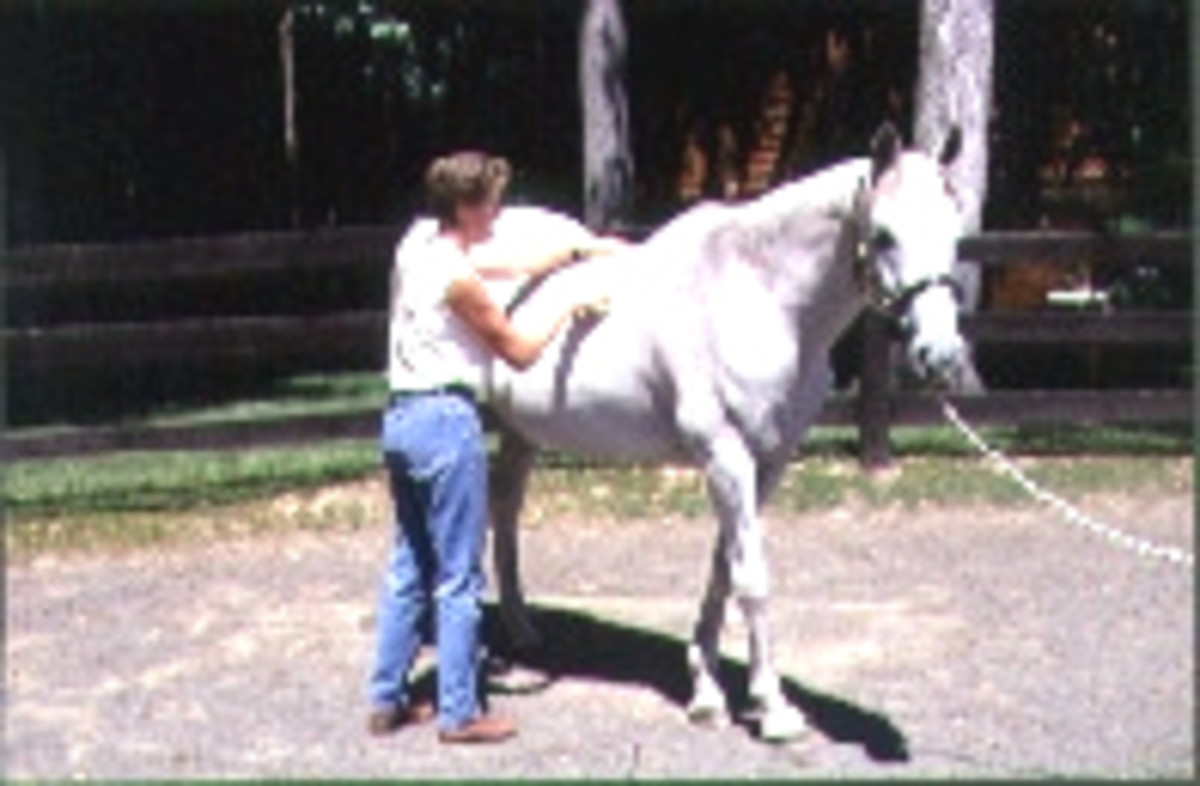Diagnosing Your Horse’s Back Pain
- March 10, 2017
- ⎯ Equus

Unless you’ve succeeded in laying the blame for your horse’s back pain on ill-fitting tack or injurious riding, both of which can be remedied nonmedically, you’ll probably bring in your veterinarian to complete the evaluation and recommend treatment. A veterinarian’s diagnostic approach depends on his perceptions of primary versus secondary back pain. The prevalent view is that back soreness usually arises as a consequence of pain elsewhere in the horse’s body. “In our practice, we don’t see many cases where back pain is the primary entity,” says Andy Anderson, DVM, of Equine Veterinary Associates in Broken Arrow, Oklahoma. Identifying the primary ailment can be difficult, but once it’s located and successfully treated, the back pain disappears as the horse is able to move normally again.
The view that primary back pain does occur with some frequency is gaining credence among more practitioners, however. Dan Marks, VMD, of Santa Fe, New Mexico, an author and consultant on sport-horse back problems, occasionally diagnoses primary back pain leading to secondary limb pain. The restriction enforced by the back’s rigidity causes the horse to move with his hind legs “trailing out” behind, so the joints undergo more stress in bringing the legs forward with each stride.
Whichever clinical experience informs your veterinarian’s views, his painstaking diagnostic examination will cover just about the whole horse, starting with palpations and gait observations. The veterinarian will likely perform flexion tests on the limbs to exaggerate minor lameness there that could be influencing the back. He may possibly “block” sore joints and painful areas along the back with local anesthetic to see whether numbness improves the horse’s way of going. A blood-sample analysis for elevated muscle enzymes can help determine how much, if any, muscle-tissue damage has occurred.
If the physical examination doesn’t yield conclusive results, you can either opt for additional diagnostics or try treating the signs without knowing exactly what’s causing them. Additional diagnostics, including sophisticated radiographs, scintigraphy and thermography, can be expensive and are available only at some university hospitals and larger private clinics. Even with a sizable outlay of money and time, there’s no guarantee that the resulting images will produce a definitive diagnosis–although they’ll certainly provide more clues to the puzzle. Treatments aimed at alleviating back pain might remedy the problem without your ever knowing for sure what caused it, and this may be perfectly acceptable to you. But scattershot treatment regimens that fail to produce some benefit may be more expensive in the end than additional diagnostics–not to mention that the horse continues to experience the aching back.
Next Page – Pt. 4 – Treating Your Horse’s Back Pain
Excerpted from an article that first appeared in the April 1999 issue of EQUUS magazine.








